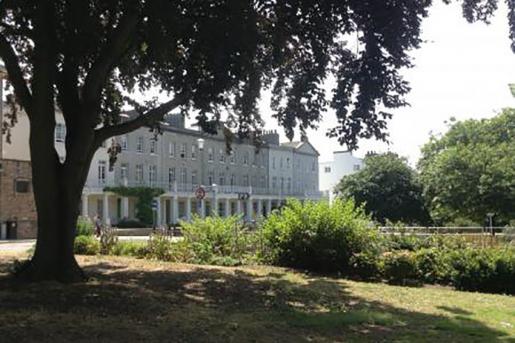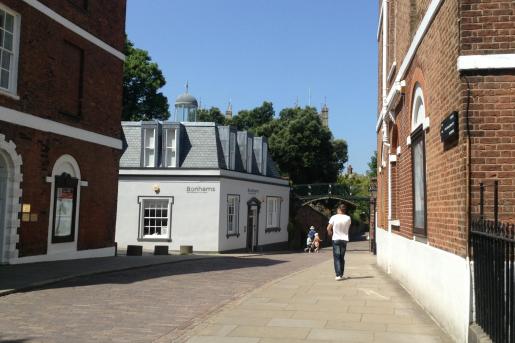- Gardens
- C19
Southernhay is an outstanding example of late eighteenth century urban planning.
Southernhay was the site of fairs in ancient times and remained as grazing until the late eighteenth century when the climate, amenities and scenery of Exeter attracted wealthy families; Southernhay and the adjoining Bedford Circus (sadly demolished after the Second World War), Dix’s Field and Barnfield Crescent were planned to accommodate this influx of people; Matthew Nosworthy and William Hooper were the principal builders of this most expansive layout of Georgian Exeter. It is still impressive, even though the NW part was destroyed in the last war and replaced by Broadwalk House, a large office block, in1974. Southernhay is an inspired piece of design and a most pleasant urban space with a series of four central gardens defined by formal terraces on the west side and more varied buildings to the east. In Southernhay West, the restrained three-storied red brick terraces following the line of the city ditch, were designed by Matthew Nosworthy in 1789, his first recorded work in Exeter. It is very much in the tradition of London work of the 1770s: blank arcading framing the round-headed ground-floor windows, white string courses, doorways with Coade stone surrounds and pretty little faces in the keystones. Nos.1-10a was well restored when converted to offices in 1975-7. Thomas Sharp, in his Exeter Phoenix a plan for rebuilding, (Architectural Press 1946) proposed that there should be ‘green moat’ around the City Walls. The Exeter City Council sold their former offices of 1-10 Southernhay West in the early 1970’s and one of the conditions required the developer, as part of the refurbishment scheme, to create a landscaped walk at the rear of the property, alongside the City Wall. Opposite, in Southernhay East, the Royal Devon and Exeter Hospital, was one of the first provincial hospitals. In 1974 the RD&E moved to a new site and the City Council prepared a development brief for the development of the grounds and adjoining land. Southernhay Gardens was planned as a collegiate style office precinct with modest office blocks grouped around pleasant landscape courtyards and the existing mature trees; an example of how good modern development can enhance the historic environment.
Listed Grade II* & II.
Cherry & Pevsner: The Buildings of England – Devon, 1989: 430-1



